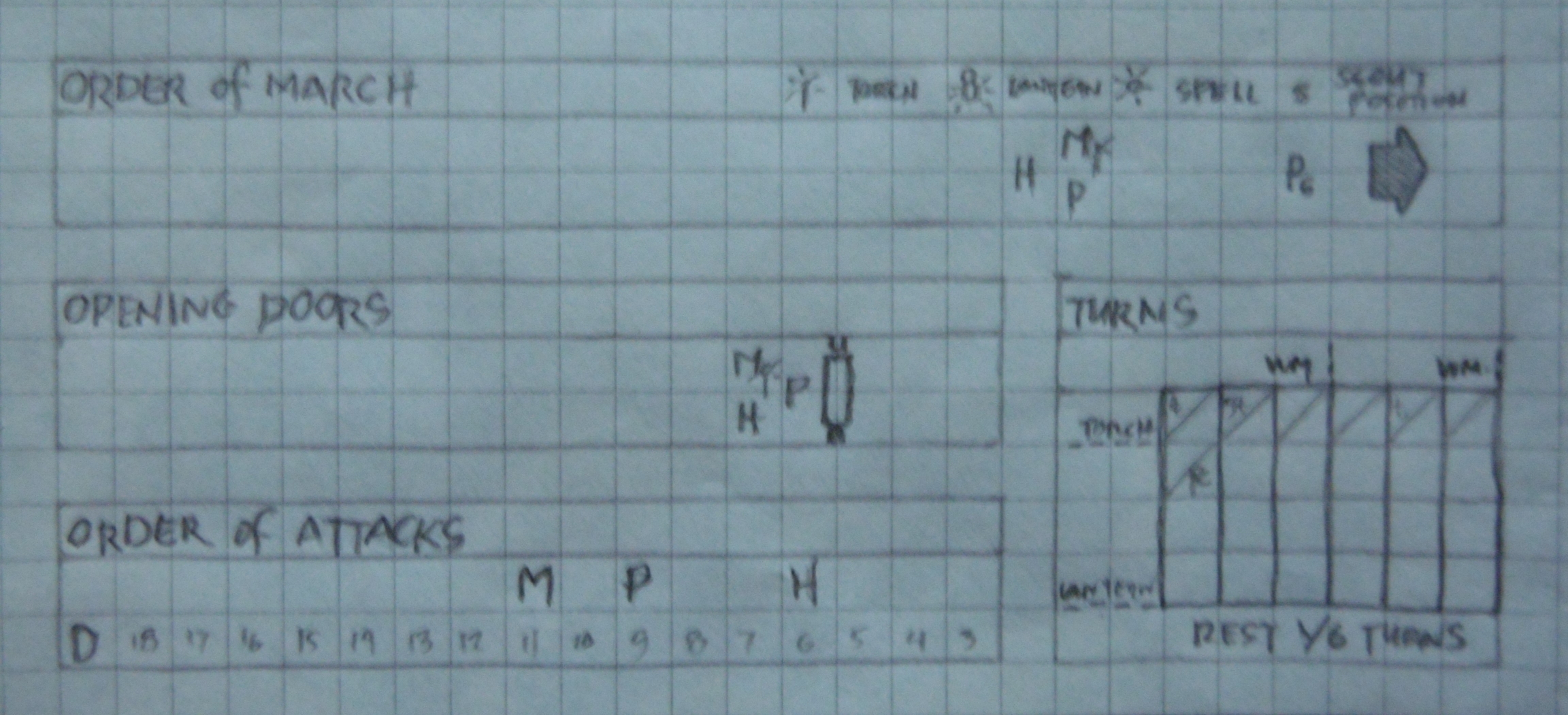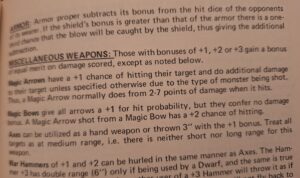Wandering monsters are a DM’s best friend. They are indispensable to old-school D&D game play. By draining the party’s resources without hope of a treasure reward, the possibility of such a random encounter keeps the characters moving, keeps the players on their toes. It raises the tension in a way a DM can only hope some planned story will do.
Keeping track of turns is a basic task a DM must learn. Not only wandering monsters, but light sources, party rest, and spell durations all depend on time keeping. It’s a habit that isn’t so difficult to pick up.
I make a simple four-by-six grid in the corner of the map or, as in this case, in the adventure log. That’s four torches or a lantern’s worth of turns. In one square of six, the party must rest or suffer fatigue, and every third turn (Holmes Bluebook) brings a dice roll for a wandering monster. Durations measured in turns are noted in the appropriate square. The turn a spell is cast, for example, is marked, as is the turn in which the party rests.

“Ps” marks Penlod’s scouting position. Also shown are the order of opening doors and order of attacks by dexterity score (Holmes).
Adventure Log Excerpt
The photo above is from Dreaming Amon-Gorloth’s adventure log.
First Turn: At the rubble-strewn entry, Melqart lights a torch (“t”). The party enters. Penlod notices a secret door, and the group inspects the contents of the room beyond: a dozen skulls set into wall niches.
Second Turn: Entering the grand entry hall, the group encounters scarab beetles at the north door. The giant insects scurry. A burst of three explosions shakes the vault as jets of acid shoot from their nether parts. Melqart, stunned by the noise (“St”), slumps in a puddle of sizzling acid. Penlod throws a spell, and the insects collapse unconscious.
Third Turn: Penlod carries Melqart toward the entrance, while Hathor-Ra, carrying the torch, guards the withdraw. Among the rubble, the two are halted by an enchanting song emanating from within. The explosions attracted a harpy.
Fourth Turn: Turning, Penlod lets the magic-user slide from his shoulder. He and Hathor-Ra move toward the harpy’s lovely voice. The harpy puts a hand on each of their shoulders.
Fifth Turn: Now charmed, Penlod and Hathor-Ra follow the harpy down the grand hall, descending stairs, as Melqart comes to his senses. Lighting another torch (“t”) from his pack, Melqart follows the harpy song.
Sixth Turn: The harpy makes room in her nest. Just as the she descends to fetch the waiting Hathor-Ra, Melqart arrives at the top of the stairs. He casts charm person on the harpy.1
Seventh Turn: The party rests (“R”) while debating what to do with their new friend…
Notes
1 Holmes on Charm Person: “This spell applies to all two legged, generally mammalian humanoids of approximately man size…” (14). We could argue that a harpy, being only half mammalian, is not subject to charm person. A counterargument is that her mammalian half is very much so.

Pingback: Dreaming Amon-Gorloth – DONJON LANDS
Pingback: Progressive Dice, a Misnomer – DONJON LANDS
Pingback: Progressive Dice for Effects Durations – DONJON LANDS